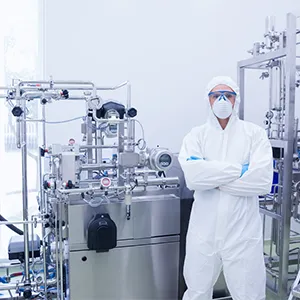
While the terms “pasteurization” and “sterilization” are sometimes used interchangeably, each is actually a separate process offering unique benefits. Knowing the difference between the two will help you understand why scientists and manufacturers from a wide range of industries choose to use one over the other as they test and create food items, drugs, cosmetics, chemicals and more. Keep reading for a quick overview of the pasteurization vs. sterilization processes:
Pasteurization
Pasteurization refers to the application of low-level heat to food so that the harmful microorganisms and enzymes in it are either killed or deactivated. By eliminating these pathogens, pasteurization helps preserve many types of food items and prevents food-borne illness and disease upon their consumption. Since only a mild heat is applied, the treated food experiences just a small reduction in nutritional value and little change to its sensory qualities, making pasteurization a great preservation and safety tool for many food products.
Sterilization
Sterilization, on the other hand, refers to the process by which all microorganisms are killed or removed from an object or substance. Unlike pasteurization, which usually relies on heat to kill pathogens, sterilization can be achieved via several different means, including high pressure, chemicals and radiation, and can be applied to multiple types of products (not just food).
So, How Does Homogenization Fit In?
When considering pasteurization vs. sterilization, it’s easy to also wonder about homogenization. Homogenization is the process by which one substance is broken into uniform parts and thoroughly mixed with another. Different types of homogenizers rely on different forces to reduce particle size and facilitate this mixing — from turbulence, impact and shear to ultrasonic sound waves and high pressure.
Of course, first and foremost, homogenizers are meant to homogenize, but our BEE brand high-pressure homogenizers here at Pion have the added benefit of effectively pasteurizing many food items, too. During high pressure homogenization (HPH), a sample is exposed to extreme pressure and pushed through tiny holes which break its cellular bonds, reduces its particle size and allows it to be better mixed with another substance. This process doesn’t just allow for better mixing, though; it kills many pathogenic organisms, as well.
Thermal pasteurization is still the most common pasteurization method, but in 2004, the National Advisory Committee on Microbiological Criteria for Foods (NACMCF) issued a report requesting that “pasteurization” be redefined to include "any process, treatment, or combination thereof, that is applied to food to reduce the most resistant microorganism(s) of public health significance to a level that is not likely to present a public health risk under normal conditions of distribution and storage” (i.e., pasteurization can be accomplished via means other than heat). Indeed, many food manufacturers are pushing for increased reliance on high pressure pasteurization since it has the potential not only to reduce nutritional degradation, but to enhance it due to physical and chemical changes that occur when certain foods are exposed to high pressure. Current studies even show promise in using ultra high pressure homogenization for sterilization; there’s little doubt that it’s an exciting time for high pressure homogenizers!
Want to Learn More?
If you’re wondering how high-pressure homogenization might benefit your pasteurization processes or have other questions regarding pasteurization vs. sterilization methods, please contact us. Our patented emulysifying cell technology affords many advantages; we would be happy to review your needs and help you choose a homogenizing system that will improve your manufacturing or research procedures and boost your productivity, as well as strengthen the quality of the products you test and create.

